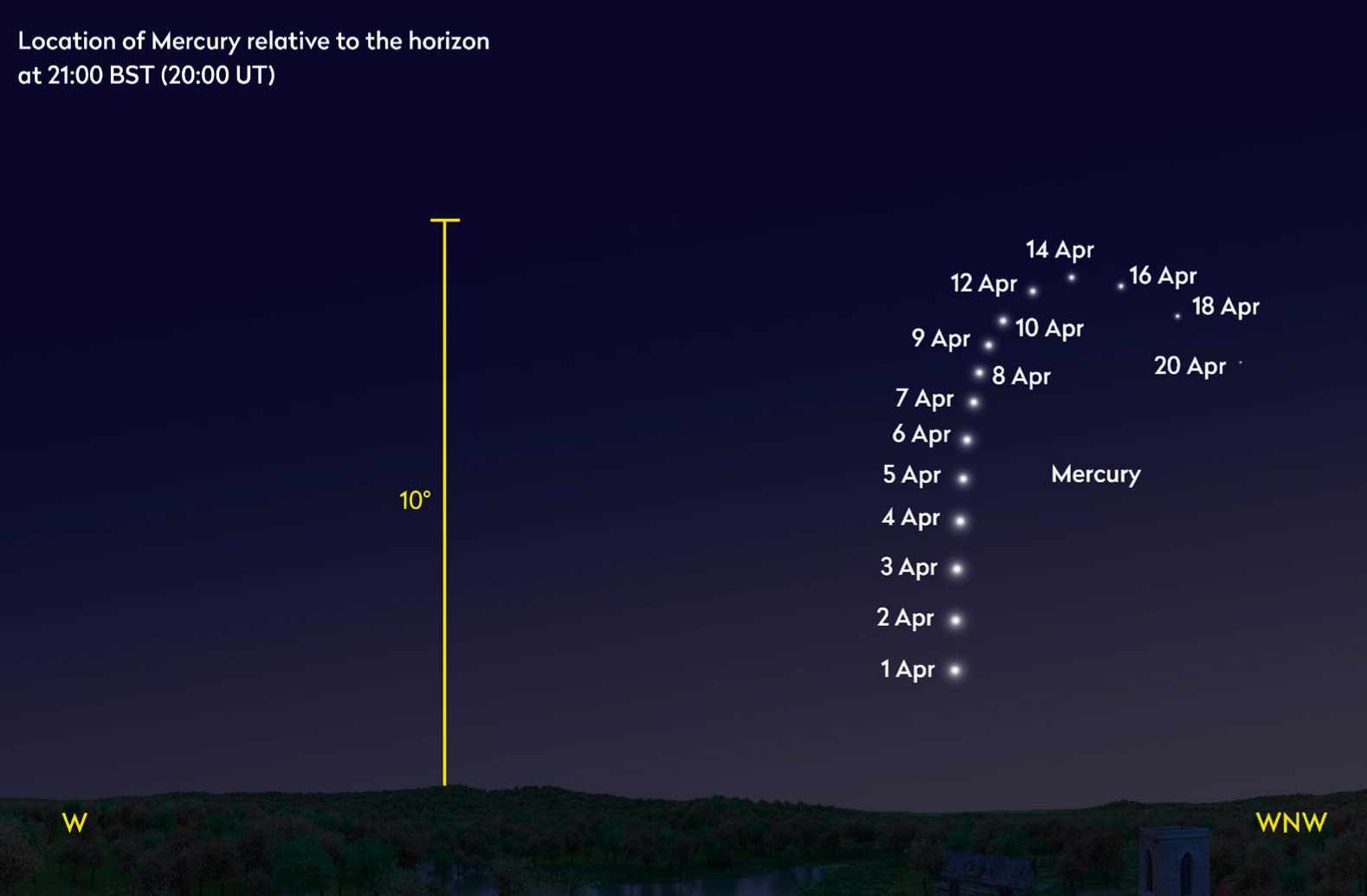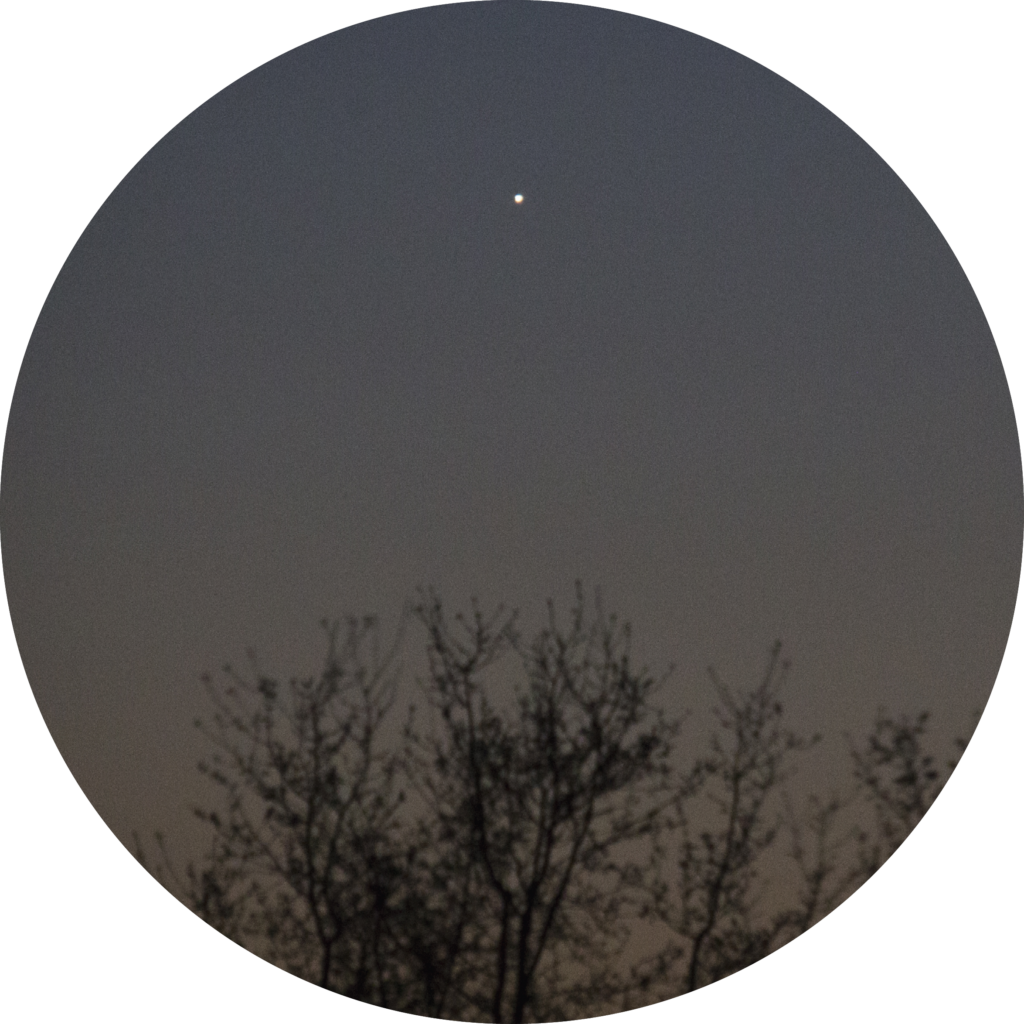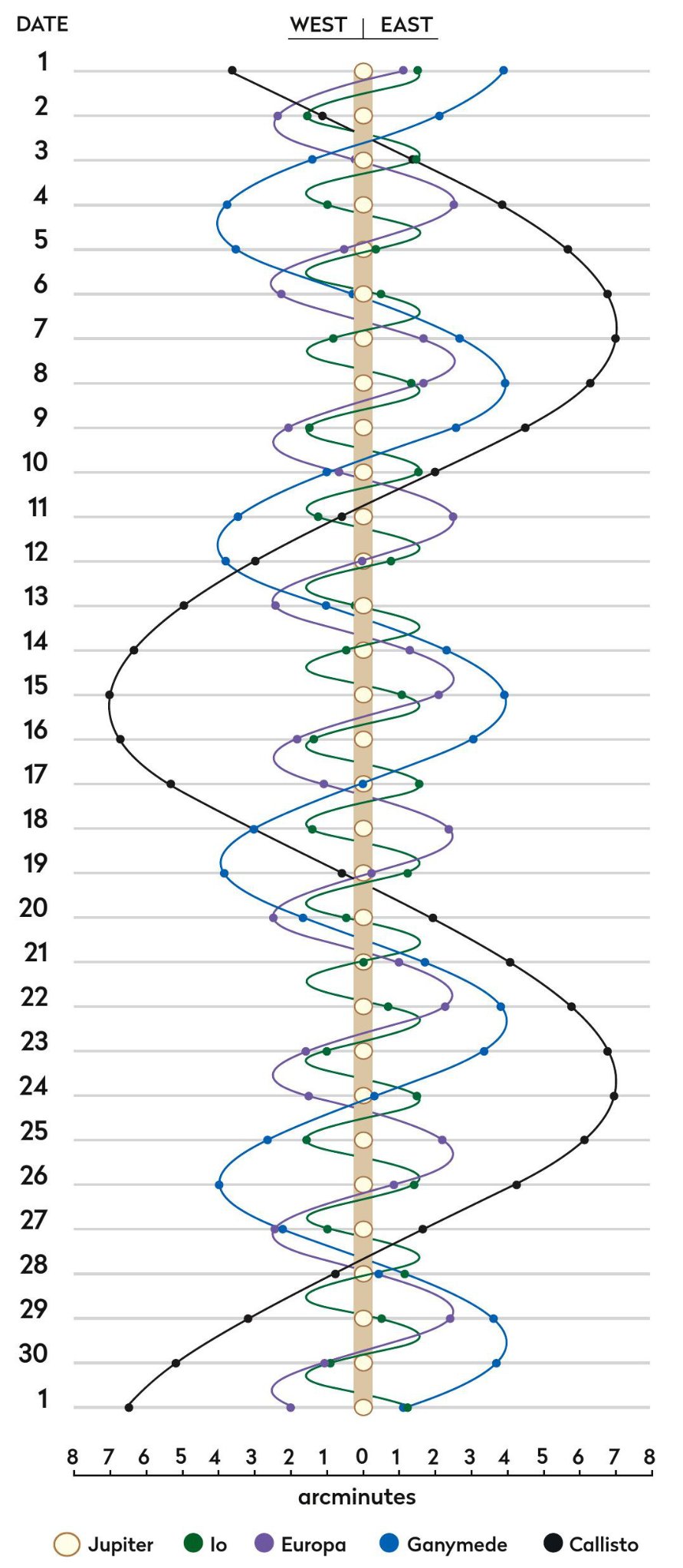Our celestial neighbourhood in April
PICK OF THE MONTH
Mercury
Best time to see: 11 April, 45 minutes after sunset
Altitude: 10°
Location: Aries
Direction: Northwest
Features: Phase, subtle surface markings
Recommended equipment: 150mm or larger

Mercury is an evening object this month and at the beginning of April appears bright and well-separated from the Sun. This makes April a great month to try to see this elusive world. At the start of April, Mercury is reasonably bright at around mag. –1.1, but it dims rapidly thereafter. By 11 April, now shining at mag. +0.2, it reaches its greatest evening altitude at sunset. On this date, it sets a fraction over two hours after the Sun, which is great news if you’re planning to look for it.
On 21 April, Mercury’s dimming will have reduced it to a much trickier mag. +2.3, but it should still be possible to see it as long as you allow the evening twilight sky to darken sufficiently. A slender 3%-lit waxing crescent Moon sits 6.4° to the west of Mercury on this date. The dim planet Uranus will also be close, separated from Mercury by 3.8° but tricky to see against the twilight bright sky. Mercury thereafter closes in on the Sun fairly rapidly and will be lost from view at the end of April, with inferior conjunction occuring on 1 May.

Looking at Mercury through a telescope will show the planet’s phase. On 1 April, it appears tiny at 5 arcseconds across and presents a 77%-lit gibbous disc. As the month progresses, its apparent size increases in step with a decrease in phase. On 15 April, for example, Mercury now appears 8 arcseconds across and presents a phase of 26%. Trying to observe it in the evening or morning twilight will subject it to lots of atmospheric turbulence that makes seeing the planet’s phase that much harder.
Venus
Best time to see: 30 April, from 1 hour after sunset
Altitude: 24º
Location: Taurus
Direction: West-northwest
The magnificent evening appearance of Venus continues this month as the planet gets further from the Sun, heading towards greatest eastern elongation, its greatest separation from the Sun, on 4 June. On 10 April, mag. –3.9 Venus is just 2.7° south of the beautiful Pleiades open cluster. The sky gets astronomically dark around 22:00 BST (21:00 UT) when the pair are around 16° above the west-northwest horizon. This means there’s a good opportunity for a stunning photograph.
The rapidly expanding spring evening twilight takes some of the shine off Venus during the latter part of April, but as the mag. –4.0 planet passes through Taurus at the end of the month, it is joined by a gloriously thin waxing crescent Moon on the evenings of 22 and 23 April. On 30 April, 3° south of Elnath (Beta (β) Tauri), Venus sets 4 hours and 15 minutes after the Sun. Through the eyepiece of a telescope, Venus appears 66%-lit and 16 arcminutes across at the end of April.
Mars
Best time to see: 1 April, from 21:45 BST (20:45 UT)
Altitude: 47º
Location: Gemini
Direction: West-southwest
Shining at mag. +1.0, Mars is an evening planet, and a shadow of how it appeared around opposition at the end of 2022 and the start of 2023. Through the eyepiece of a telescope, it appears 11 arcseconds smaller than it did at its peak apparent size at the start of December 2022 – it is now just 6 arcseconds across. This means that it is tricky to see much in the way of detail. On the evening of 14 April, now at mag. +1.2, the planet sits just 9 arcminutes from mag. +3.0 Mebsuta (Epsilon (ε) Geminorum). At the end of April, Mars remains in Gemini, shining at mag. +1.3 and appearing 5 arcseconds across through the eyepiece.
Jupiter
Not visible this month
Jupiter is in conjunction with the Sun on 11 April and won’t be visible all month.
Saturn
Not visible this month
Saturn is poorly placed in the morning sky and unlikely to be seen this month.
Uranus
Best time to see: 1 April, from 21:30 BST (20:30 UT)
Altitude: 13º
Location: Aries
Direction: West
Uranus is too low to observe properly as astronomical darkness falls. On 1 April, the planet is just 11° above the western horizon as true darkness arrives, but after the first week in April, Uranus is almost at the horizon by the time the sky is properly dark. The planet is located 4° from mag. +1.8 Mercury on the evening of 19 April, the faint mag. +5.8 Uranus being a struggle to see against the bright twilight sky.
Neptune
Not visible this month
Neptune is a morning object and will be lost in the dawn twilight in April.
More ONLINE
Print out observing forms for recording planetary events
www.skyatnightmagazine.com/bonus-content/9BN84GZ
The planets in April
The phase and relative sizes of the planets this month. Each planet is shown with south at the top, to show its orientation through a telescope

JUPITER’S MOONS: APRIL
Using a small scope you can spot Jupiter’s biggest moons. Their positions change dramatically over the month, as shown on the diagram. The line by each date represents 01:00 BST (00:00 UT).
